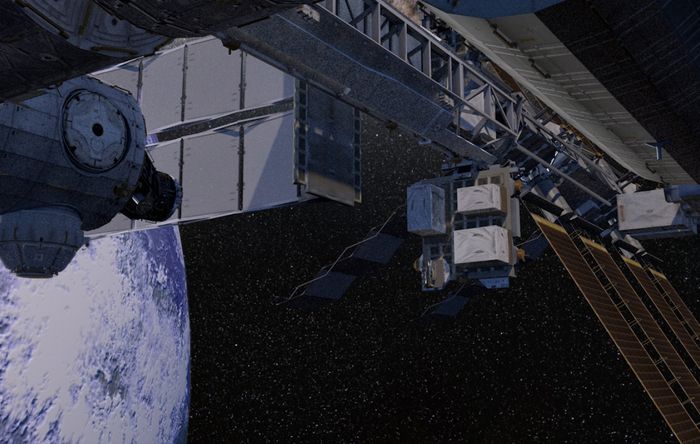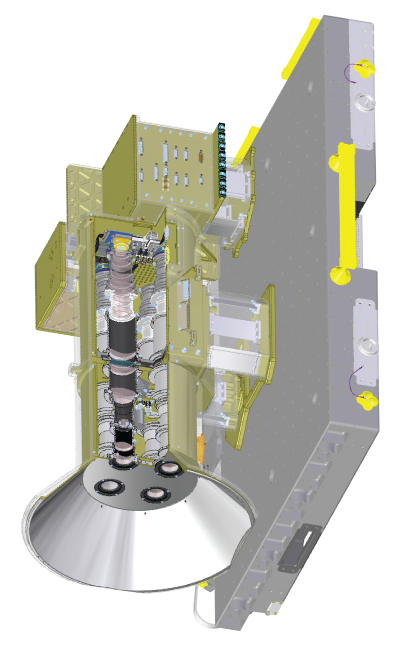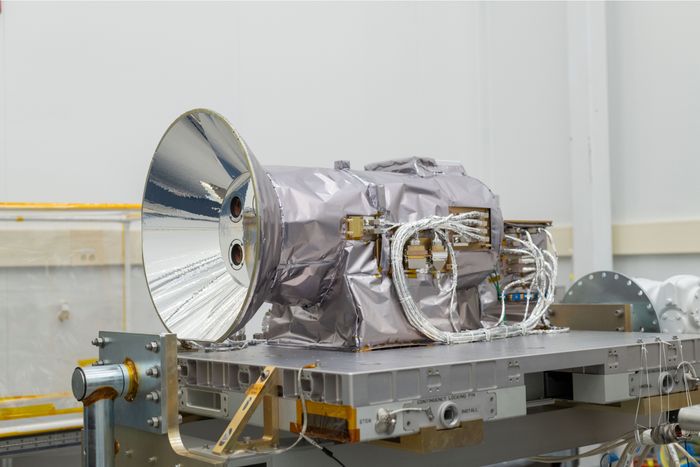Payload
The AWE payload consists of a single instrument, the Advanced Mesospheric Temperature Mapper (AMTM), attached to the ISS in a nadir-viewing configuration. The AMTM, a wide field of view infrared imager, enables AWE science data collection and builds on a long legacy of AGW observations of the mesopause.

About the Instrument
The AMTM is a high-optical throughput imaging system that quantifies gravity wave-induced temperature disturbances in the hydroxyl (OH) airglow layer. The instrument is designed to provide an outstanding combination of spatial and temporal resolution, field of view, and temperature precision. The AMTM’s four identical telescopes will simultaneously measure the P1(2) and P1(4) emission lines of the OH (3,1) band, as well as the atmospheric background, from which the OH layer temperature will be derived.

ExPA
The ExPRESS Payload Adapter (ExPA) is NASA-provided hardware that serves as the AMTM’s mechanical and electrical interface to the ISS.
The ISS’s robotic arm interfaces with the ExPA to remove the AMTM from the launch vehicle and install it on Site 3 of the ExPRESS Logistics Carrier (ELC)-1.
Specifications
AWE’s engineering team streamlined the AMTM instrument design in both size and complexity, resulting in a compact system compatible with the ISS.
| Instrument Specifications | |
|---|---|
| Mass | 58 kg |
| Volume | 0.30 m3 |
| Field of View | 90 degrees |
| Power | 20 W (orbit average) |
| Data Rate | 5.40 Mb/s |
| Integration Time | 1.0 seconds |
| Filters | P1(2): 1524.1 nm P1(4): 1543.2 nm Background: 1521.4 nm Q (cloud reflection): 1434.5 nm |
